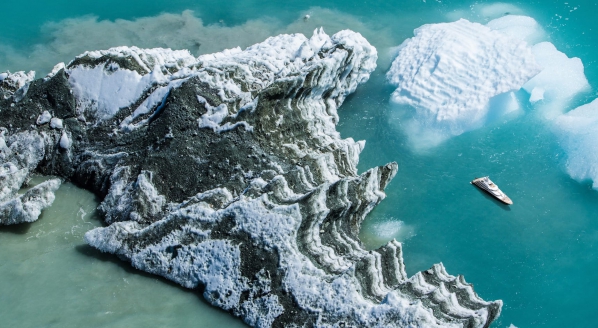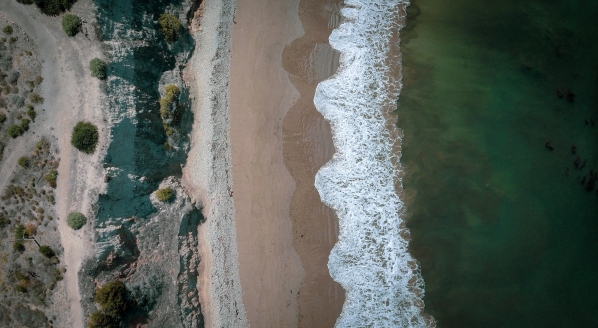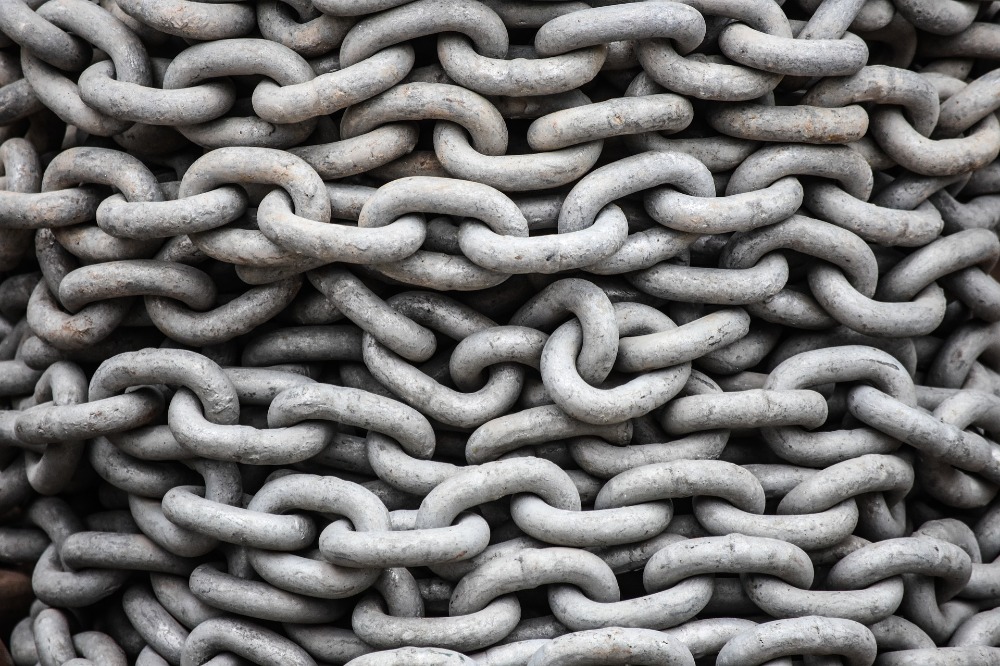What is the true cost of setting the anchor?
A war is taking place on the seafloor between anchor chain and coral reef, and the chain is winning…
The process of researching and writing The Pacific Superyacht Report evoked many memories of my time remote cruising. These memories are mostly great, but some, undeniably, are a little tainted by time. The concept of exploration implies the uncovering of virgin territory. However, the very act of being there has an impact, and there is one thing specifically that still leaves me unsettled.
There is pressure to find creative, daring and photogenic anchorages to complete the guest experience at the end of each day. The ability of a captain to find the perfect anchorage can be the difference between a good charter and a great one. In the tropics, increasingly, this dictates to: getting close to a reef, pushing further inside a lagoon, finding the most isolated sandbar with clear water and, of course, a unique experience.
The quest to find more exciting and isolated shallow water anchorages in the tropics has consequences. Here is a simple thought experiment that best describes what I have seen:
If we were to task a team of engineering graduates to design a system for systematically pulverising the sea-floor in a given area, using no moving parts and with only the wind and tide as power, what would they devise? I would guess that they would create something along the following lines: 100 meters of 26mm chain laid across the seafloor, made fast to a fixed point and connected to a large floating object with sufficient windage to be spun in circles…
I have seen this first-hand many times: at first by accident and then increasingly with intention. During a charter in the British Virgin Islands, a group of guests asked if they could see the anchor; as we were only in 12m of water, I thought it would make a fascinating (and easy) diving excursion. It was unquestionably exciting to step off the transom, swim the length of the keel and follow the chain to the seafloor. As we pulled ourselves down the chain, the bottom came in to focus, and the sight was, as the principal charter guest told me after, “like a horror movie”.
I will over-explain this next bit but feel free to skip ahead if you are positive you know precisely how an anchor holds a ship, but perhaps a refresher is timely; the chain is the key. The anchor itself provides a point that the momentum or engines of the yacht can pull against and straighten a length of chain across the bottom. The chain holds the vessel with a long (and very heavy) loop running down, with the majority laid across the seafloor. The vessel often does not pull directly on the anchor, except in high wind/current situations, in which case you may have more on your plate than dead coral!
For the seafloor ecosystem, the problem is not the anchor; it is the chain. What I saw then, and countless times subsequently, was a chain that stopped for nothing as it continued its death roll across the seafloor as the vessel tacked back and forward in the wind or spun in the reversing tide. The crunching sound of the coral and the stark milk-white of the broken pieces are hard to forget. It made for a pensive post-dive de-brief (and a quiet request for the guests to move anchorage).
The idea of a coral reef forms an image in our minds of long unbroken stretches of wall, just beneath the surface and impenetrable to any vessel. The reality is that most growth occurs sporadically and spread out over a much larger area and forms a vital shallow water ecosystem for tens of thousands of species. Its protection is essential and should be welcomed with more than the typical eye roll that accompanies any mention of the zones designated for seagrass meadow protection in the Mediterranean.
The safety of the vessel is paramount; I would never advocate a compromise for the sake of what, when taken in isolation, is a small environmental gain. We need to devote more effort and resources to clearly defining areas to safely anchor, supported by research and funded by the visiting vessels if necessary. Several high profile fines have been enforced for damaging protected reefs in the Caribbean. Still, I believe the genuine threat lies in the ‘death by 1000 paper cuts’ associated with repeated shallow water anchoring in ecologically sensitive zones.
Large corals grow as little as one cm per year, a futile number in the face of the increase in the size of visiting yachts and the frequency of visits to isolated regions. The South Pacific, in particular, appeals because of the isolation and beauty of its islands. If we repeat our mistakes and replicate our behaviour, we may irreversibly damage what is fundamental to these regions being such desirable locations to visit and charter.
NEW: Sign up for SuperyachtNewsweek!
Get the latest weekly news, in-depth reports, intelligence, and strategic insights, delivered directly from The Superyacht Group's editors and market analysts.
Stay at the forefront of the superyacht industry with SuperyachtNewsweek
Click here to become part of The Superyacht Group community, and join us in our mission to make this industry accessible to all, and prosperous for the long-term. We are offering access to the superyacht industry’s most comprehensive and longstanding archive of business-critical information, as well as a comprehensive, real-time superyacht fleet database, for just £10 per month, because we are One Industry with One Mission. Sign up here.
Related news

Superyachts facilitate conservation and scientific research
The Pelorus Foundation pairs yachts with marine scientists and conservation groups to conduct vital research
Owner

Project Menorca yields positive results
Sunseeker and Blue Marine Foundation's marine environment programme is a positive model for others to replicate
Business

Related news
Project Menorca yields positive results
5 years ago
Circular Economy Action Plan
6 years ago
NEW: Sign up for
SuperyachtNewsweek!
Get the latest weekly news, in-depth reports, intelligence, and strategic insights, delivered directly from The Superyacht Group's editors and market analysts.
Stay at the forefront of the superyacht industry with SuperyachtNewsweek




